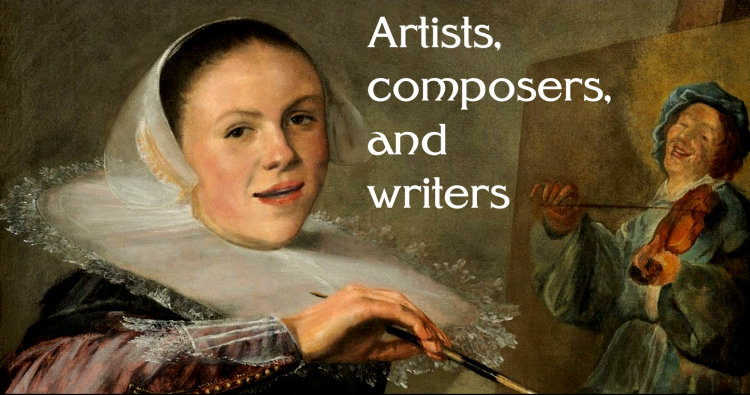GO TO: [A–C] [D–F] [G–K] [L–N] [O–R] [S–U] [V–Z]

Aboudia divides his time between Brooklyn and Abidjan, painting in a style that marries street graffiti to Abstract Expressionism. [12]
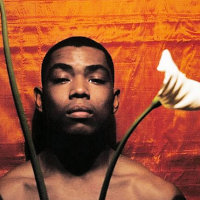
Born into poverty in Depression-era Texas, Ailey nonetheless established himself as one of the leading Black dancers in America, performing with May Angelou, Lester Horton, George Balanchine, and on Broadway. He founded the Alvin Ailey American Dance Theatre in 1958 to give a dance presence to Black experience, and choreographed Revelations, his signature work, in 1960. [12]
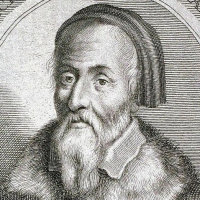
Working most of his life in Regensburg in the Danube valley, he was one of the first German painters to take an interest in landscape, including the forests which often figure in his works. [2]

He is first recorded as a painter in 1417, and by 1423 had joined the Dominican Order in Fiesole, where he remained all his life, becoming prior in 1450. Although not an innovator like Masaccio, he is noted for the purity of his style, which set the tone for Florentine art of the mid-quattrocento (1400s). He took the name Fra Giovanni, but it is as Fra Angelico (Angelic Brother), and later Beato Angelico, that he is recorded. [1]
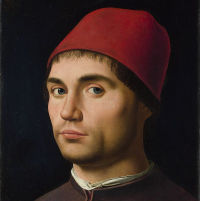
He probably learned the secrets of Netherlandish oil-painting technique because of contacts between the Netherlands and Naples. And in his visit to Venice in 1475–76, he would have passed these on to local artists, explaining some the qualities of light and color that distinguished Venetian art . [1, 2]

He was a leading member (with Honthorst and Terbrugghen) of the Utrecht School of painters in early 17th-century Holland, following in the style of Caravaggio. Although he died young, he had already made a mark with the vigor of his genre scenes such as The Procuress (1622), which would influence a lot of subsequent Dutch painting. [4, 5]

Associated with the Harlem Renaissance, Barthé specialized in Black subjects. He declared: "All my life I have been interested in trying to capture the spiritual quality I see and feel in people, and I feel that the human figure as God made it, is the best means of expressing this spirit in man." [Wikipedia] [12]

His seven symphonies and numerous symphonic poems show his late-Romantic style. This later went out of fashion, though he was appointed Master of the King's Music in 1942. Bax also wrote fiction and verse under a pseudonym. [8]
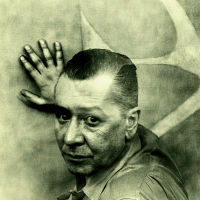
Baziotes was born in Pittsburgh to Greek parents, and studied art in New York. He became friends with many of the Abstract Expressionist painters, but his own work is equally influenced by the European Surrealism of Miró and Arp, featuring an interplay of biomorphic shapes on an indeterminate ground. [11]

Wikipedia begins: [Beaumarchais] "was a French polymath. At various times in his life, he was a watchmaker, inventor, playwright, musician, diplomat, spy, publisher, horticulturist, arms dealer, satirist, financier, and revolutionary (both French and American)." Two of his three Figaro plays, The Barber of Seville (1775) and The Marriage of Figaro (1784), have been immortalized as operas by Rossini and Mozart respectively. [7]
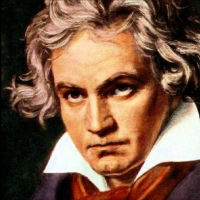
The dominant composer of his time, Beethoven wrote 9 symphonies, 16 string quartets, 32 piano sonatas, and one opera, Fidelio, which he labored on in several versions between 1805 and 1814. From about 1800 onwards, increasing deafness gradually put an end to his performing career, although he wrote some of his finest works when totally deaf. He is one of the first composers to exhibit a distinct late style. [7]

One of a family of artists, he more than anyone was responsible for developing the characteristic Venetian style of painting in layers of oils, no doubt learned from the Flemish masters. This gives his pictures their extraordinary light, whether portraits or religious subjects. [3]
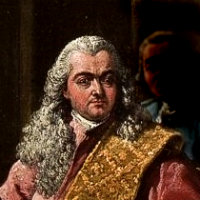
The nephew and former assistant to Canaletto, he sometimes used his name when working outside Italy, as he did in the later part of his life, painting vedute (views) of Vienna and other northern cities in a similar style to his uncle's, though generally darker and less fanciful. [7]

A leading member of the Ashcan School, and known for his scenes of city life and boxing, Bellows was a pupil and close associate of Robert Henri. At 27, he was the youngest artist ever to be elected to the National Academy of Design. [10]
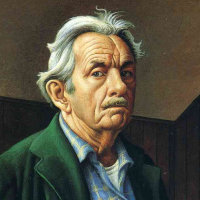
After training in Paris and painting in a more avant-garde style, he turned to subjects from history and myth, treating American figures in an exaggeratedly classical style. He later simplified again, to become one of the leading Regionalist painters of country life. [10]
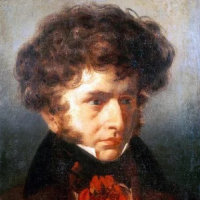
The leading French composer of the Romantic era, Berlioz was a master of orchestration and dramatic effect. A fervent admirer of Shakespeare (and a Shakespearean actress, Harriet Smithson), his works often have a stong literary quality that can obscure their musical craftsmanship. He was unable to get a full performance of his operatic masterpice, The Trojans (1863), but it has come into its own in recent years. [6]
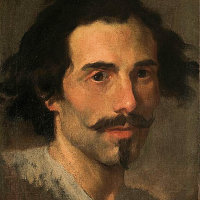
He is to the Italian Baroque what Michelangelo was to the Renaissance, the supreme master of many arts. The sense of movement and drama in his sculpture carries through into his architecture and even his town planning, such as the piazza before St. Peter's. [4, 6]
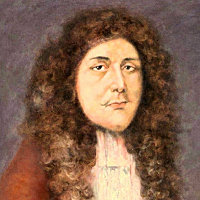
Biber worked in Bohemia and Eastern Austria before settling in Salzburg at the age of 26, where he remained for the rest of his life. A virtuoso violinist, he wrote some of the earliest solo pieces for the instrument. His sacred music includes the Missa Salzburgensis (1682) for 53 vocal and instrumental parts, the largest work ever composed in the baroque ear. [4]
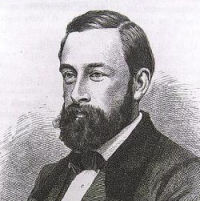
Born in Germany, but living mainly in New York. Although a member of the Hudson River School, he became the painter par excellence of the American expansion to the Rockies and beyond. [1, 10]
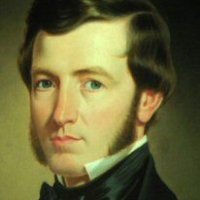
Originally a tanner by trade, he became one of the first American-born composers, essentially self-taught, writing hymns, somewhat more complex "fuguing tunes," and patriotic songs. [10]
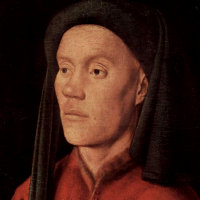
Binchois was praised by his contemporaries in the same breath as Dufay, though his fame has declined somewhat. He is especially memorable as a melodist, with a gift for the long expressive line in both his secular and sacred vocal work. [He may or may not be the subject of this portrait by Jan van Eyck.] [2]
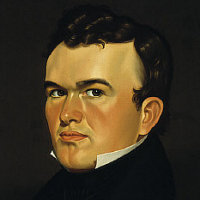
More or less self-taught, Bingham is noted for the simplicity and freshness he brought to his depictions of boatmen on the Missouri, where he lived. [10]
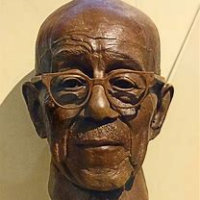
Blake was born in Baltimore to former slaves; his father was a stevedore. He started "foolin' around" on a music-store organ at age 5, and the owner persuaded his mother to buy him an instrument; he was playing in a Baltimore bordello in his teens. As well as the composer of several standards, he is best known as the creator (with Noble Sissle) of the first Black musical Shuffle Along (1921). [12]

Training first in Accra and then in Vienna, where he still lives, Boafo has pursued as meteoric career as a figure painter and portraitist, with one of his works from 2018 selling for $3.4 million in auction in Hong Kong. [12]

Boccioni was a principal artist and leading theorist of the Futurist movement, founded in Milan in 1910. He based much of his visual language, in painting but especially in sculpture, on his experience of Cubism in Paris in 1911 and 1912. He was killed on active service in WW1. [1]
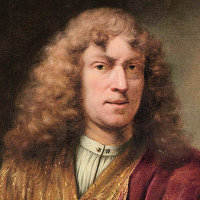
Much of his surviving work has been wrongly attributed to his master, Rembrandt, but in fact Bol rose to become the most successful Amsterdam painter in the mid-17th century. [5]
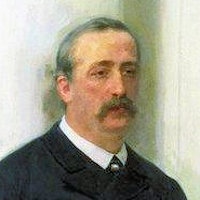
A medical doctor and research chemist, he only composed music as an amateur (as did many of his contemporaries in the "mighty handful"). But works like his tone poem In the Steppes of Central Asia (1889), his unfinished opera Prince Igor, and some of his chamber music sing in a distinctive and often haunting Russian voice. [9]

His real name was Jerome van Aken, but he signed his paintings with the shortened name of his town, 's Hertogenbosch. Famous for his imagination in illustrating religious themes based on images from folklore and the medieval bestiary. [1]
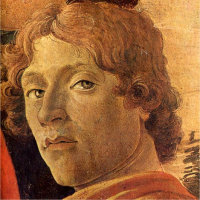
Botticelli's work was neglected for centuries, but he is now acknowledged as the leading Florentine painter of the later quattrocento. Although he produced numerous religious paintings, he is best known for two large mythological works: Primavera (c.1480) and The Birth of Venus (c.1485). [3]
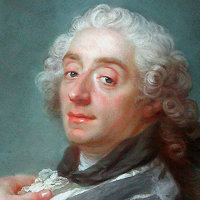
His many works, which virtually define the French rococo style, include several elegantly erotic treatments of mythological subjects, such as his Jupiter and Callisto, but also genre scenes, erotica, and even landscapes. [6]
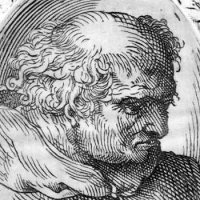
Born near Urbino in central Italy, Bramante worked first in Milan, then moved to Rome in 1499. His tiny Tempietto (1510), built on the spot where St. Peter was crucified, epitomizes the perfection of the High Renaissance. From small scale to large, Julius II engaged him as architect for the new St. Peter's, and his plans underlie all subsequent designs, but he died long before they could be completed. [3]

Brecht's importance to opera rests mainly on his collaborations with Kurt Weill between 1928 and 1932: The Threepenny Opera, Happy End, Mahagonny, and The Seven Deadly Sins. A Communist, he fled the Nazi régime, but returned after the War to found the celebrated Berliner Ensemble in East Berlin. [11]

Brooke is today best known for his 1914 sonnet The Soldier ("If I should die, think only this of me"), which maintained a nobility that other war poets decried. Strikingly handsome (Yeats called him "the handsomest young man in Engand"), he had achieved great popularity before he died of sepsis from a mosquito bite on the way to Gallipoli. [8]
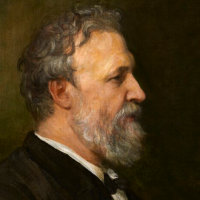
Although best known today for his lyrical and shorter narrative verse, Browning established a reputation as a leading Victorian poet also through longer works such as the play Pippa Passes (1841) and the novel-length The Ring and the Book (1869). [8]
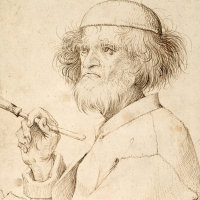
Considered the greatest Northern European painter of his time, he produced mainly moralistic works characterized by their high viewpoint and close observation of ordinary people. Also spelled "Brueghel" and "Brughel." [2]
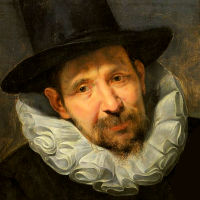
The son of Pieter Breughel, he specialized in animal, flower, and landscape motifs, sometimes collaborating on pictures with other artists such as Rubens, a practice continued by his son (Jan the Younger) after his death. [1]
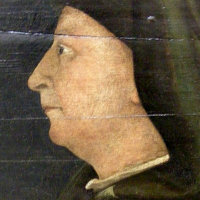
One of the founding fathers of the Renaissance, he came to prominence as a sculptor in the competition for the Florence Baptistery doors, eventually won by Ghiberti. But it was as an architect that he made his biggest impression on the city, with the churches of San Lorenzo and Santo Spirito, and his crowning achievement, the dome of Florence Cathedral. [3]
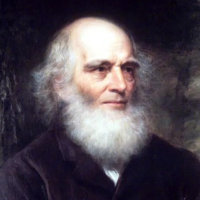
Born in a log cabin in Massachussetts, Bryant rose to become editor of the New York Evening Post and one of the most popular poets of his time. His style, though by no means innovative, was easy to understand, drawing many readers to his themes of the divine in nature and the continuity of life. He was a close friend of Thomas Cole. [10]
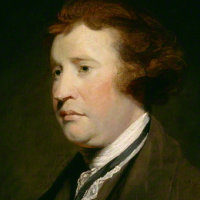
Burke's 1757 treatise on The Sublime and the Beautiful was the first important discussion of the idea of the Sublime in art. His later career as a statesman, opponent of slavery, and supporter of freedom (though opponent of the French Revolution) is more important to history. The quotation "The only thing necessary for the triumph of evil is for good men to do nothing" is probably not by him, though it fits his thinking. [8]
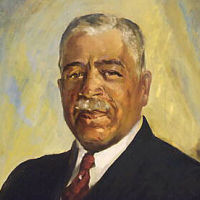
The grandson of slaves, Burleigh was awarded a scholarship at the National Conservatory of Music in New York in 1892. His singing of traditional spirituals came to the attention of the director, Antonin Dvorak, who incorporated similar material in many of his works. Burleigh himself gained national renown as a singer, composer, and arranger of Black music. [1]
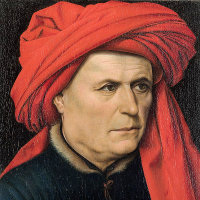
Campin has gradually emerged from scholarly shadows as the probable painter of a handful of works previously attributed to a conjectural "Master of Flémalle." In spite of the still-uncertain identification of many works associated with him, there is no doubt of his status as a key figure in the transition of Northern art from Gothic traditions to modernity. [1]
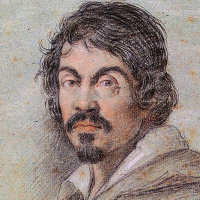
Arguably the most original Italian painter at the start of the 17th century, he treated mostly religious subjects in a bold realist style that shocked his contemporaries, but was nonetheless widely influential. His figures tend to be large in proportion to the canvas, their actions and reactions dramatic, and their appearance that of ordinary working people. Caravaggio also often used concealed light sources that increases the drama of his depictions. [4]
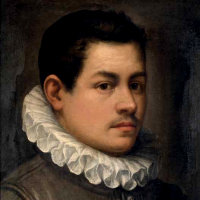
He was the youngest of the three Carracci artists (brother Agostino b.1557, cousin Lodvico b.1555) who often collaborated. Annibale was the principal designer of the mythological themes for the Palazzo Fava in Bologna (c.1584) and the celebrated Palazzo Farnese in Rome (c.1600). [4]
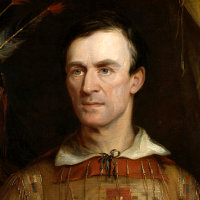
Catlin practiced law in Philadelphia before taking up painting; he was entirely self-taught. He is best known for his numerous depictions of Native Americans, and would spend large parts of each year staying in their camps as an honored guest. [10]

The leading opera composer after Monteverdi, his works dominated the Venetian stage in the mid 1600s, and frequently addressed mythological subjects, such as his La Calisto (1651). [4]
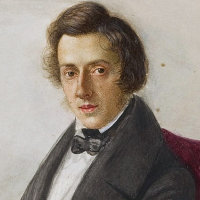
Chopin was a virtuoso pianist (though for the most part avoiding the concert stage), and wrote almost exclusively for the piano, in a variety of shorter forms, many reflecting the dances of his native Poland, which he left at age 20 to escape the consequences of a revolution. He spent his adult life in Paris, where he was a frequent guest at salons. He maintained a long relationship with the writer George Sand. [9]
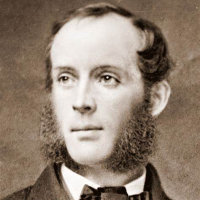
A pupil of Thomas Cole, Church was (with Bierstadt) the outstanding landscapist of the second generation of the Hudson River School. He was attracted to highly dramatic subjects, such as his Niagara, which made him famous, and traveled to the Andes and Middle East in search of them. [10]
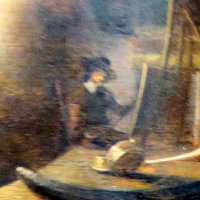
Though born near Antwerp, he moved to Haarlem in is early twenties, and there became a leading painter of Still Lifes, using subtle modulation of a limited palette, and often with some allegorical or moral overtone. He was also a musician. [The illustration is a distant reflection of the painter in one of his works.] [5]
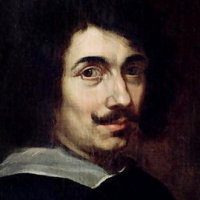
His Arcadian and harbor scenes, principles of composition, and use of light earned him the reputation as the greatest of all landscape painters, and his influence especially in France, Britain, and America lasted until the mid-19th century, not only in art but also landscape gardening. [6]
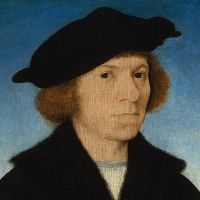
After working in Bruges, Joos moved to Antwerp, where he became Dean of the Guild of Painters. His style owes much to painters of an older generation, but he also seems to have absorbed some Italian influence. He is credited with being the first to include "world landscapes" in the backgrounds of his paintings. [1]
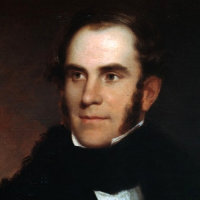
A founder of the Hudson River School. Towards the end of his career, he turned to grand historical and allegorical themes, of which The Course of Empire was one. [1, 10]
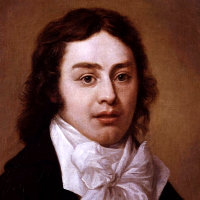
With the joint publication of the Lyrical Ballads with Wordsworth in 1798, Coleridge co-founded the English Romantic movement. He went his own way in later years , however, exploring the more fantastic aspects of Romanticism with works like "The Rime of the Ancient Mariner" and "Kubla Khan." He became addicted to opium. [8]
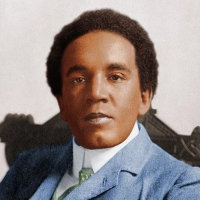
Son of a physician from Sierra Leone and an English mother, he studied at the Royal College of Music with Stanford. His compositions had some modest international success, but none to match the acclaim given to his three cantatas based on Longfellow's Hiawatha. [10]
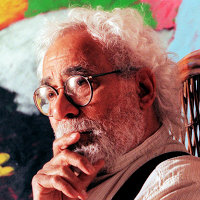
Born in California, Colescott studied partly at Berkeley, partly with Fernand Léger in Paris. His is known for his exuberant and often satirical works, many of which are parodies of old masters, representing the position of Black people within American society. [12]

Even more than his contemporary Turner, Constable was the leading English landscape painter of the 19th century. Living in East Anglia, he was influenced by the Dutch landscapists painting very similar country. He made numerous outdoor sketches of clouds and trees, with free and brilliant handling of paint, but reverted to a more sober style in his paintings for exhibition. [8]
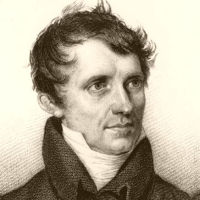
Cooper grew up in Cooperstown NY, a community founded by his father. After being expelled from Yale, he served first as a merchant seaman and then in the US Navy. The reputation of his large literary output, once much admired both at home and abroad, now rests mainly on his five Leatherstocking Tales, especially The Last of the Mohicans (1826). [1, 10]
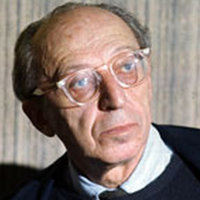
Trained in Paris, Copland began writing in the style of the European avant garde, but with ballet commissions in the 1930's and 1940's such as Billy the Kid, Rodeo, and Appalachian Spring, he developed the open folk-inflected style that has become, for many people, the sound of American music. [10]
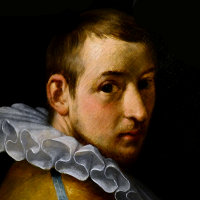
Cornelis was known for his Italianate biblical and mythological paintings featuring nude figures in energetic and often contorted poses. He was also a portraitist. [5]
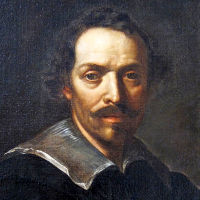
A notable master of the Roman Baroque style, known especially for his religious subjects, Cortona also worked elsewhere, in such secular projects as his frescos of the Four Ages in the Pitti Palace in Florence. [4]
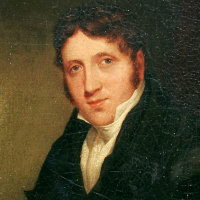
Born in Norwich and essentially self-taught, he had six watercolors accepted by the Royal Academy at the age of 18. Known for his views of landscapes and buildings characterised by an extreme simplicity. [8]
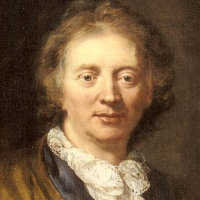
The supreme master of the harpsichord in his time, and organist and chamber composer to both Louis XIV and XV, Couperin left hundreds of works for the keyboard and chamber ensembles, many of which have descriptive titles that function like miniature tone poems. [6]
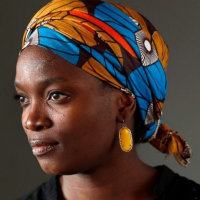
Crosby is a Nigerian-born visual artist working in Los Angeles. Through her art Akunyili Crosby "negotiates the cultural terrain between her adopted home in America and her native Nigeria, creating collage and photo transfer-based paintings that expose the challenges of occupying these two worlds" [Smithsonian citation]. She was awarded a MacArthur Foundation "genius" grant in 2017. [12]
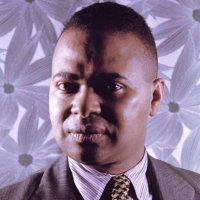
Cullen was the adopted son of one of Harlem's leading ministers, and was educated at NYU and Harvard. In form, his poetry has a Keatsian elegance, though his subjects are drawn from the negro experience. [12]
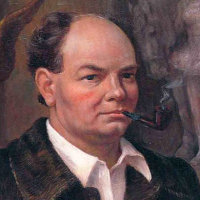
One of the leading figures of the Midwestern Regionalist movement in the interwar period, Curry painted scenes from his home state of Kansas, and patriotic pictures for the government in WW2. [10]
GO TO: [A–C] [D–F] [G–K] [L–N] [O–R] [S–U] [V–Z]

Internationally celebrated as a mathematician, he also studied law, medicine, and the natural sciences. So it was as a polymath that he joined with Denis Diderot in founding and for a time co-writing the Encyclopédie. [6]
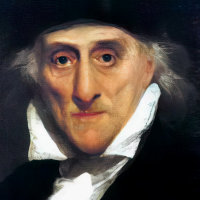
Da Ponte's lasting claim to fame is as librettist for Mozart's Marriage of Figaro, Don Giovanni, and Così fan tutte. But he also wrote for numerous other composers, including Salieri. He spent the last years of his life in New York, trying to etablish an opera company. [7]
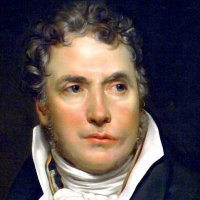
The leading Neoclassical artist of his day, David replaced rococo frivolities with stern history paintings with strong moral content. He was a dedicated supporter of the Revolution and politically active as a Deputy. He was imprisoned briefly after the fall of Robespierre, but resurfaced as principal painter to Napoleon. Through his many pupils, he influenced French salon style for a generation. [6]
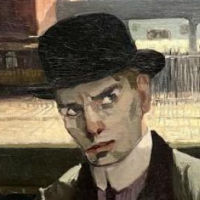
Beginning as a realist in the "Ashcan School" style, Davis was one of the youngest artists to exhibit at the Armory Show of 1913, which in turn exposed him to contemporary European art. The experience turned him into a committed Modernist. One of the first abstract painters in America, he made a reputation especially for his jazz-influenced work of his later years. [1, 11]
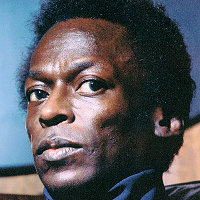
A trumpeter, bandleader, and composer, Davis had a career in jazz spanning five decades and numerous different styles. After playing with Charlie Parker 1944–48, he struck out on his own, leading groups that included such players as John Coltrane and Herbie Hancock. His Kind of Blue album of 1959 was performed almost entirely without written music, and became one of the best-selling jazz records of all time. [11]
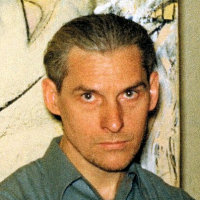
Born in Holland, de Kooning came to America as a stowaway in 1926, became an American citizen in 1961. By this time, he was already celebrated as a leading figure in the Abstract Expressionist movement. His paint handling was just about as active as Jackson Pollock's, and his color sense more exuberant, but he never completely abandoned figurative subjects, such as in his series of Women (1953). [11]
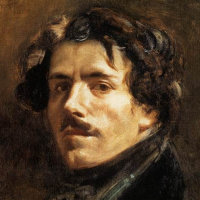
The leading French painter of the Romantic movement, he is known for his brilliant Rubensian color and his dramatic compositions. Especially in the first half of his career, these included political themes, such as The Massacre at Chios (1824) and Liberty Leading the People (1830), as well as subjects from Romantic literature. He also visited North Africa, and was constantly fascinated by the exotic. [6]
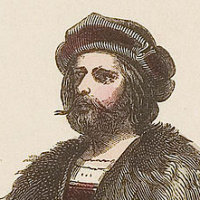
Born in and working largely in Flanders, De la Rue is known to have traveled to France, Spain, and England, but probably not to Italy, although his music was well known there. This makes him highly unusual among Franco-Flemish musicians of his generation who, like Josquin des Prez, enjoyed a comparable international reputation. [3]
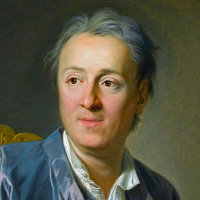
One of the key figures of the Age of Reason, his chief fame is as co-founder (with d'Alembert) and editor of the Encyclopédie, which brought together scientific knowledge and Enlightenment thought. [6]

After service in the First World War, recorded in some of his most savage paintings, Dix became a critical commentator on social conditions in the Weimar Republic. [11]

Dopper trained in Germany, but returned to Holland where he devoted himself to creating a recognizably Dutch form of music. Despite this, his reputation suffered from accusations of being too Germanic in his sympathies. [5]

Born in Kansas and a graduate of the University of Nebraska, Douglas was recruited to New York by the editor of the Black periodical Opportunity to serve as the painter of the Harlem Renaissance. Unlike many of his contemporaries, he was able to obtain fellowships and commissions which sustained him in a long career. His works seem composed of flat transparent layers overlaid in depth. [12]

Dove, who spent some time in France in the ferment of the first decade of the century, is credited with painting the first abstract pictures in America, although he did not exhibit them at the time. [11]
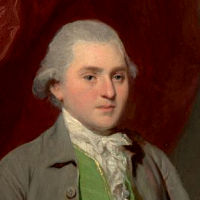
Although he pursued a successful career as a portrait painter, Downman does not seem to have depicted himself; the sitter of the portrait here is unknown. He also left a collection of exquisite sketches. [8]
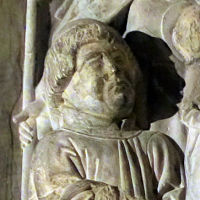
Dufay (also spelled Du Fay and other variants) was born near Brussels. Writing in most genres and traveling widely, he was regarded as the leading composer of his time, composing for example a motet for the dedication of Brunelleschi's dome of Florence Cathedral. [The portait comes from his tomb.] [2, 3]

The greatest German draughtsman of the Renaissance and a formidable intellect, he produced an astonishing series of woodcuts and engravings throughout his career, as well as a number of devotional paintings and portraits, plus numerous sketches and watercolors that testify to his extraordinary powers of observation. [1, 2]
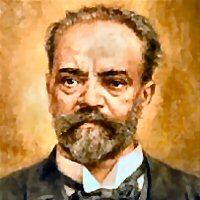
Dvorak composed ten operas, many of which have a continued presence in his native land. But only his fairy-tale opera Rusalka (1901), a variant on the Little Mermaid story, has had true international success, cropping up in an astonishing range of productions in the last few decades. [1, 9]
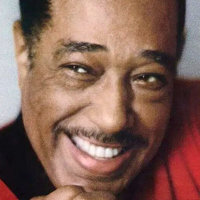
"Born and raised in Washington, D.C., Ellington was based in New York City from the mid-1920s and gained a national profile through his orchestra's appearances at the Cotton Club in Harlem. Writing or collaborating on more than a thousand pieces, Ellington was known for his inventive use of the orchestra, or big band, as well as for his eloquence and charisma." [Wikipedia] [12]

The leader of the Transcendentalist movement, Emerson made his mark through speeches, essays, and poetry. He began as an ordained Unitarian pastor, but left the church to develop his belief of the immanence of God in Nature and Mankind. [10]

As an architect, Fischer built the palace of Schönbrunn, the National Library, and the Karlskirche in Vienna, together with other important buildings throughout Austria. As an author, he wrote a comprehensive book on European architecture which had a profound influence on subsequent taste. [7]
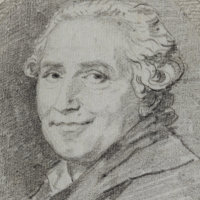
Fragonard, who has been described as the "fragrant essence of the 18th century," was surely the most exuberant of all Rococo painters. It is easy to see how his fondness for galant subjects of love and dalliance should have led him to the myths of Ovid. But his series of "imaginary portraits" reveal an artist of strength and insight. [6]

A second-generation Abstract Expressionist, she was the first to develop the technique of pouring thin paint onto unprimed canvas, greatly influencing several of her better-known contemporaries. [11]
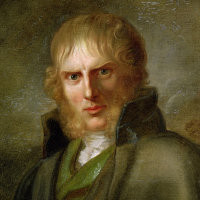
The greatest German Romantic painter and a truly original visionary, he conceived images based on unconventional views of nature with strong, albeit enigmatic, moral implications. [8]
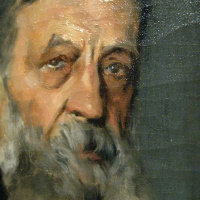
"Fry was the first known person born in the United States to write for a large symphony orchestra, and the first to compose a publicly performed opera.[1] He was also the first music critic for a major American newspaper, and he was the first known person to insist that his fellow countrymen support American-made music." [Wikipedia] [10]
GO TO: [A–C] [D–F] [G–K] [L–N] [O–R] [S–U] [V–Z]
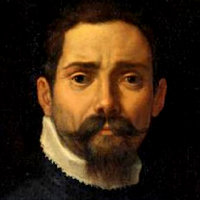
Third in a line of succession to Adrien Willaert and his uncle Andrea Gabrieli as organist of Saint Mark's in Venice, he is famous for the spatial effect of his polychoral compositions, using mixed groups of instruments and voices calling to one another antiphonally between the various balconies of the church. [4]
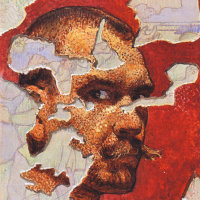
Although considered the leading painter of Finnish nationalism, largely for his use of themes from the Kalevala, Gallen-Kallela grew up in a Swedish-speaking family, and lived for extended periods in Paris, Berlin, Nairobi, and Taos NM. [9]
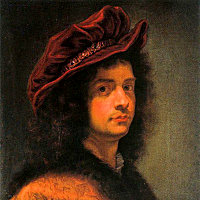
Coming to Rome in his early twenties, he was championed by Bernini, who helped him get his first major commission, the ceiling of the Jesuit mother church, the Gesù (1674–9). He also painted the official portraits of seven Popes. Sometimes known as "Baciccio." [4]
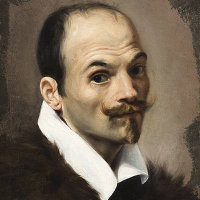
One of the few Italian followers of Caravaggio who were friends with the master, he traveled widely and was important in spreading knowledge of his style, athough his own painting became lighter and more colorful in his later years. He was the father and teacher of Artemisia Gentileschi. [4]
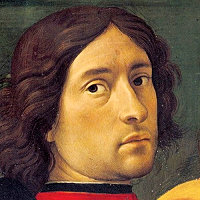
In the same generation as Botticelli, Pollaiuolo, and Verrochio, Ghirlandaio achieved success through his ability to execute large-scale subjects that often included portraits of his wealthy patrons. He was also a remarkably sensitive in his independent portraits, including the famous Old Man and his Grandson in the Louvre. Michelangelo was one of his pupils. [2]
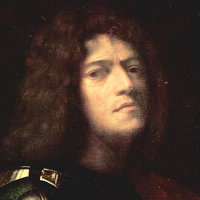
Almost nothing is known of his life, and the catalogue of his undisputed works is very small, his fame and influence are quite disproportionate to the size of his output. He was an exquisite colorist, the first to specialize in cabinet paintings for private patrons rather than religious commissions, and the first painter to subordinate subject matter to the evocation of mood. [3]
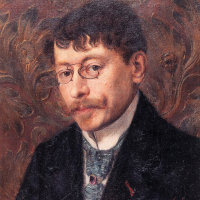
Giraud (born Emile Albert Kayenbergh) was a Symbolist poet whose principal claim to lasting fame is his Pierrot Lunaire (1884), set to music by Arnold Schoenberg in 1912. [11]
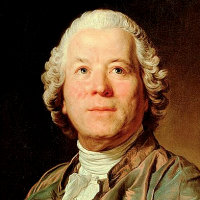
After training in Italy, he accepted a position in Vienna in 1754, where he embarked on his reforms of the old opera seria. He moved to Paris in 1770. Most of his operas, whether in Italian or French, have mythological themes, and his Orfeo ed Euridice (1762) and Echo et Narcissse (1779) have Ovidian ones. [7]
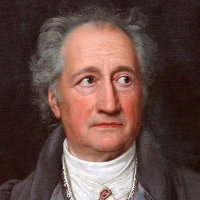
One of the great universal geniuses of the 18th century, Goethe epitomizes the transition between the Age of Reason and the Romantic era. His scientific works are still studied today, the two parts of his Faust hold a special place as an expression of moral philosophy, and his poems provided inspiration for Schubert and many other composers. [8]
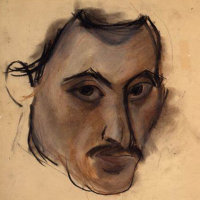
After the death of his mother, both fleeing from the Armenian genocide, Gorky came to the US in 1920, where he was briefly reunited with his father. Influenced by Postimpressionism and European Surrealist abstraction, he became a crucial link between European avant-garde and American Abstract Expressionism. [11]
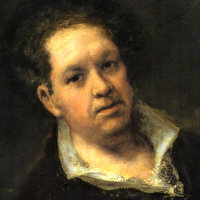
A slow developer, he began as a somewhat conventional Rococo painter and tapestry designer, but developed into an insightful portraitist, and—after going totally deaf in 1792—a savage social critic as a printmaker, and painter of some of the most terrible events of his time. His series of "black paintings" from the end of his life display a shattering visionary intensity. [1]
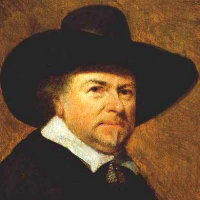
The outstanding artist in the earlier, tonal stage of Dutch landscape painting, he produced several thousand views of all aspects of the countryside, noted for their atmosphere and sensitive use of a restricted palette. He was widely influential. [5]
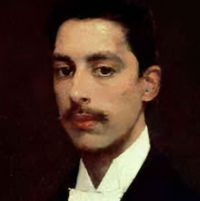
Wikipedia divides his music into three periods: works with a general romantic flavor; works such as the Spanish Dances (1890) using traditional Spanish materials; and his opera Goyescas and other late works based on his fascination with the painter Goya. [1]
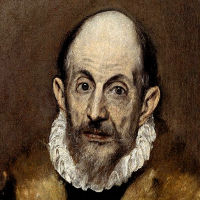
Born in Crete, El Greco studied in Venice, where he was especially influenced by Tintoretto. After living in Rome for some years, he moved to Toledo in 1577 and remained there the rest of his life. Although an immigrant, his elongated figures, bold contrasts of light, shade, and color, and turbulent skies were to prove signature elements of Spanish style. [1]

Grétry was born in Liège, Belgium, but took French citizenship. He was a leading composer of opéras comiques, lighter operas with spoken dialogue, many of which continued to be popular throughout the 19th century. [6]
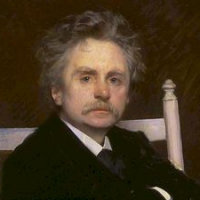
A member of a musical middle-class family in Bergen, Grieg studied at the Leipzig Conservatory, then moved to Copenhagen, where he began his career as a pianist. It was only then that national characteristics of folk-song, rhythm, and harmony began to enter his work. He became in effect the leading composer of Norwegian nationalism, much as Sibelius was in Finland, but less aggressively so, expressing himself mainly in shorter forms, belonging to the salon rather than the symphony hall. [9]
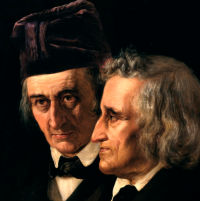
With his brother Wilhelm (1786–1859), Jacob Grimm pursued a career as an academic philologist and cultural historian. Their seminal collection of folk tales, Children's and Household Tales (Kinder- und Hausmärchen), began publication in 1812. In 1838, the bothers began work on a definitive German dictionary, but we unable to complete it in their lifetimes. [1]
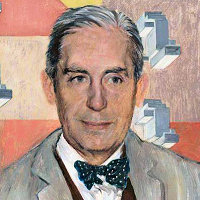
Though one of the masters of modernist architecture in his own right, Gropius made his principal mark on 20th-century art as founder of the Bauhaus School in Weimar in 1919, attracting a faculty that included leading figures in all branches of art and design, and establishing a pattern of education followed in progressive art schools ever since. He fled Germany in 1934 and eventually became an American citizen. [11]
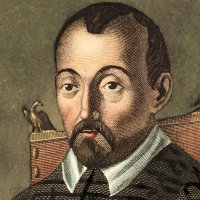
"No poet played a larger role in the flowering of the madrigal in the late Renaissance and early Baroque eras than Guarini. His poems were set more often by madrigal composers than the work of any other." [Wikipedia] [3]

Considered one of the leading exponents of Norwegian Romanticism, Gude specialized in somewhat optimistic landscapes of his country, often including figures executed by his friend Adolph Tidemand. [1]
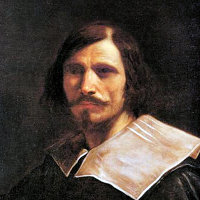
His crossed eyes, which earned him the nickname "Guercino" (squinty), did not prevent Barbieri from becoming one of the principal Italian painters of religious and mythological works in the early baroque, including the ceiling fresco The Triumph of Aurora (1621) in the Casino Ludovisi in Rome. [4]
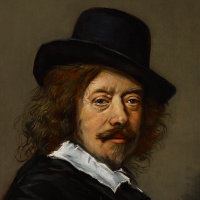
Though born in Antwerp, he moved to Harlem with his parents and spent the rest of his life there. 24 years older than Rembrandt, he was the first great master of the Dutch Golden Age and its leading portraitist. His style is remarkable for the effects he could achieve from a few swift touches of paint. [5]
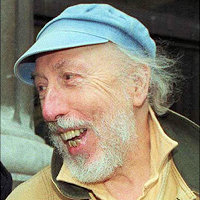
Discovering his ability as an technical draughtsman, Hamilton turned to art in his twenties, and soon became one of the leading figures in postwar British art. His collage Just what is it that makes today's homes so different, so appealing?, produced for the 1956 exhibition This Is Tomorrow, is considered one of the first creations of Pop Art anywhere. [11]
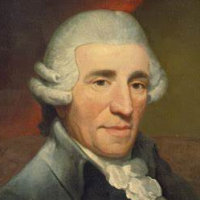
With Mozart, Haydn was the leading musical genius of the late 18th century. Equally prolific, but far longer lived, he wrote 104 symphonies, 68 string quartets, 16 operas, and 14 masses, together with the two great oratorios, The Creation and The Seasons. [7]
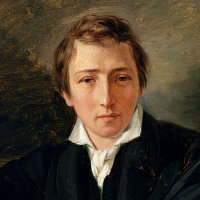
Raised as a Jew, Heine converted to Lutheranism in adolescence. His early lyric poetry was especially attractive to composers; Schumann's setting of his Dichterliebe ("Poet's Love"), for example, established itself as a masterpiece for both artists. The outspoken liberalism of his later verse caused it to be banned in many German jurisdictions, and he spent the last 25 years of his life as an exile in France. [8]
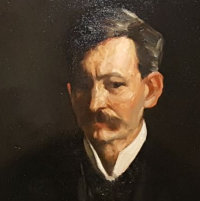
Clearly a charismatic leader and teacher, Henri's contribution to American art may rest more in the roster of artists he influenced—in the Ashcan School but also beyond—than in his own work. A realist at heart, he did much to combat American conservatism around the turn of the century. [10]
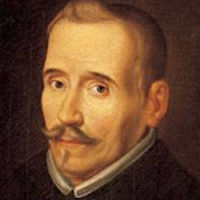
He is considered the founder of Spanish opera and the more popular zarzuela. Wikipedia notes, "Juan Hidalgo dominated secular and theatrical music at the Spanish court until his death. He was a prolific composer and enjoyed a great deal of popularity throughout his career. His place in Spanish theatre history is equivalent to that of Purcell in Britain and Lully in France." [The portrait may not be him.] [4]

Höch was a leading Dada artist and one of the inventors of photomontage. Much of her work had a political or social agenda, and often concerned the changing roles of women during the interwar era. [11]
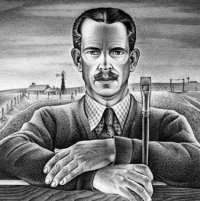
A realist painter with distinct Symbolist or Surreal overtones, Hogue's best-known work relates to the Southwest, epecially during the Dust Bowl. [10]
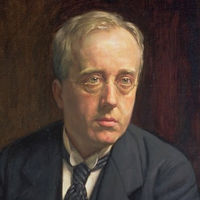
The son of a church organist of Swedish descent, Holst studied first the piano and then the trombone. With Ralph Vaughan Williams, he was largely responsible for the revival of interest in English folk music at the turn of the century. He worked most of his life as a church musician and in education, but wrote numerous works, of which The Planets (1918) is the largest and most famous. [8]
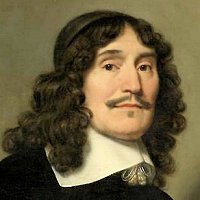
He was a leading member (with Terbrugghen and Baburen) of the Utrecht School of painters in early 17th-century Holland, following in the style of Caravaggio. His earlier works are noted for his use of a candle (often semi-concealed) to provide the ostensible light for his pictures. He later achieved success as a court portraitist. [4, 5]

His best paintings date from his years in Delft (1655–61), and show scenes of urban life in the sunlit rooms and inner courtyards of Dutch houses, in a manner not too dissimilar from Vermeer. Later in Amsterdam, his quality took second place to quantity. He died in a madhouse. [5]
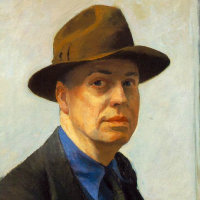
In all his career, Hopper maintained a balance between the social realism of his teacher Robert Henri, and the simplified forms of the abstraction that came into play soon after. Painting almost exclusively scenes from contemporary life, he managed to universalize the specific, and give everyday situations a powerful aura that transcended their literal subject. [10]
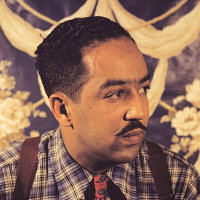
Sometimes referred to as "the poet laureate of Harlem," Hughes was born in Missouri, but had an unsettled childhood, moving from place to place. He continued to travel (including to Africa, Europe, amd Russia) and work in odd jobs even after his first works were published in 1921. His 1926 collection The Weary Blues introduced a new genre of poetry in a vernacular idiom to a jazz beat. [12]
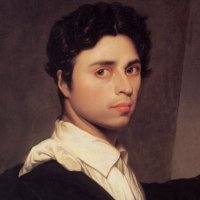
Ingres was trained in the academic tradition, and indeed spent 7 years as Director of the French Academy in Rome. Although one of the great masters of French Romantic era, his style was always marked by a cool classicism and precision of line, in contrast to the freer handling of paint by his contemporary Delacroix. [6]

Most of Janequin's large output consisted of secular chansons, often with striking onomatopoeic imitation of their subjects, which made him exceptionally popular in his day. [2]
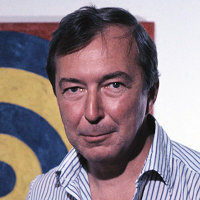
Johns' adoption of the images such as maps, targets, and the American flag was originally a way of anchoring a very active Abstract Expressionist technique to subjects that were not abstract at all, but it paved the way for later artists to treat the commonplace object as a thing-in-itself, one of the key concepts of Pop Art. He was closely associated with the painter Robert Rauschenberg, the composer John Cage, and the choreographer Merce Cunningham. [11]
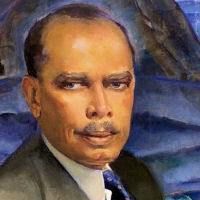
A major figure in the Harlem Renaissance, he is remembered as author of the song "Lift Ev'ry Voice and Sing," sometimes known as the "Negro National Anthem." Johnson was appointed an American Ambassador by Theodore Roosevelt, and later became leader of the NAACP. [12]

Johnson was of mixed race, African American and Cherokee through his mother, Swedish through his father, though he himself identified as Black, and frequently addressed negro themes in a somewhat abstracted, early Modernist style. [12]
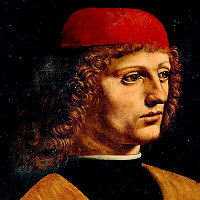
Josquin is considered one of the leading composers in the High Renaissance, and not just in the Franco-Flemish school. Almost all his works are vocal, mostly sacred. He is credited with breaking away from the tradition of long melismatic lines, writing instead in short imitative phrases that are closely expressive of the text. [This portrait of a musician by Leonardo da Vinci has not definitely been identified as Josquin, although both were in Milan at the same time.] [2, 3]
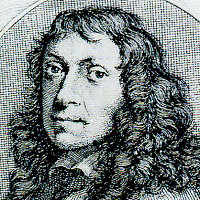
Kalf was born in Rotterdam, then spent five years in Paris, then returned to Holland, eventually settling in Amsterdam. In the second half of the century, he became the leading painter of pronkstilleven (ostentatious Still Lifes) containg exotic and expensive objects beautifully rendered in glowing color. [5]
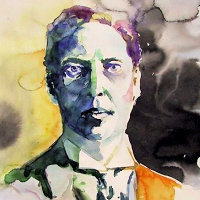
He worked mainly in Germany in the earlier part of his career, where he was a co-founder of the Blaue Reiter school of Expressionism. His paintings, which began in a post-Impressionist or Fauvist style, gradually became more abstract, a development that paralleled the experience of his friend Arnold Schoenberg in music. He returned to Russia during WW1, but then came back to Germany, where he was an influential teacher at the Bauhaus. He became a German citizen in 1927, and a French one shortly before WW2. [11]

Coming from a family of artists, Keijzer (also spelled Keyser) was the leading portraitist in Amsterdam before being eclipsed by Rembrandt in the 1630s. He is known especially for his group portraits. [The portrait here may be by him, but is probably not of him.] [5]

Marooned in the United States by the outbreak of WW1, Kindler decided to stay here, and was appointed first cellist of the Philadelphia Orchestra under Stokowski. Later, he gave up the cello for conducting, and in that capacity founded the National Symphony Orchestra in 1931. [5]
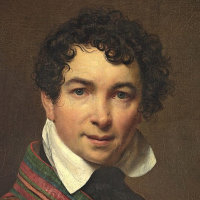
The leading Russian portraitist of the early Romantic era, Kiprensky is best known for his portrait of Pushkin. He divided his life between Moscow and Rome. [9]
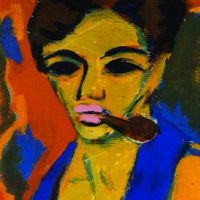
Kirchner was the co-founder of the Expressionist group Die Brücke (the bridge) in 1905, and its leading figure, painting incisive angular figures in strong colors. At the outbreak of WW1, he volunteered for service as a driver, but was invalided out due to poor health, both mental and physical. He never fully recovered, and spent the last part of his life in seclusion in Switzerland. [11]
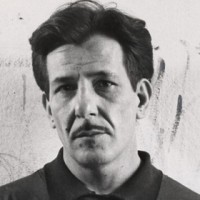
Kline began as a figurative painter and illustrator, but found his characteristic style in the late 1940s. It is said this came from a suggestion by De Kooning that he project his drawings onto the wall of his studio, to the point where the individual brushstroke became the subject, not the object represented. But although Kline's paintings may seem improvised in handling, they were in face carefully planned out through numerous sketches. [11]
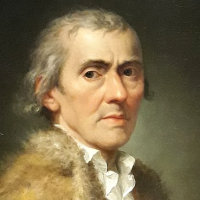
Born in the Tirol, Knoller worked at first in Austria, specializing in church and palace frescoes. He later moved to Italy, where he was influenced by neoclassicism. [7]
GO TO: [A–C] [D–F] [G–K] [L–N] [O–R] [S–U] [V–Z]
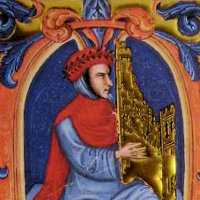
The leading Italian composer of the later 14th century, he was organist at various Florentine churches, and most probably a close friend of the poet Petrarch. Many of his secular songs have survived, but none of his sacred music. [3]
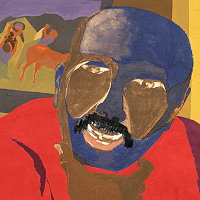
Lawrence gained national fame at the age of 23 with his 60-panel series depicting the Great Migration. He went on to paint several other series, with less specifically Black subjects but equal concern for ordinary people. His style is distinguished by bright colors and jagged shapes reflecting either the influence of Cubism or the rhythms of Harlem life. [12]
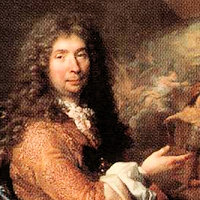
One of the geniuses behind Versailles, his Bassin de Apollon fountain shows Apollo (as Louis XIV) drawing the chariot of the Sun out of the waters. [6]

In his thirties, he developed a personal form of Cubism, using cylindrical forms in complex compositions. His experience and near-death in WW1 drew him to "the crudeness, variety, humor, and downright perfection of certain men around me, their precise sense of utilitarian reality and its application in the midst of the life-and-death drama we were in... [which] made me want to paint in slang with all its color and mobility." [1]

Le Nôtre worked with Louis Le Vau at Vaux-le-Vicomte and was engaged by Louis XIV to achieve similar marvels of garden design on an even larger scale at Versailles. A pioneer in the field, his work was emulated at other great houses around Europe. [6]
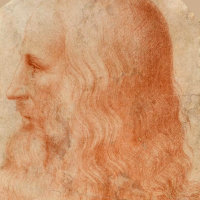
With Michelangelo and Raphael, one of the triumvirate of artistic geniuses that crown the High Renaissance. He trained in Florence with the painter Andrea Verrocchio before moving to the court of Ludovico Sforza in Milan. He spent the last years of his life at the court of François I in France. The naturalism and luminosity of his painting, and his effects of sfumato (or modeling as if by smoke), were widely influential. It is his notebooks, however, that are the best testament to the range of his genius, containing remarkable observations of the natural world, and mechanical inventions centuries before their time. [2, 3]

Lermontov is hailed as the greatest Russian poet after Pushkin, but he was also a prose writer—his novel A Hero of Our Time (1840) has a hero much like Pushkin's Onegin—an army officer, and accomplished painter. He was particularly attracted to the Caucasus region of Russia. [9]
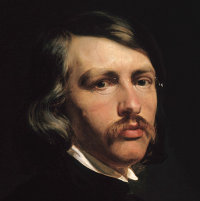
Leutze was born in Germany, came to America with his family at age 9, and began his career here. But he returned to Düsseldorf from 1841 to 1859, and it was there that he painted his iconic Washington Crossing the Delaware, modeled in part by other American painters who had come over to study with him. [10]
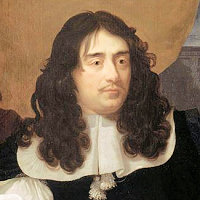
As principal architect to Louis XIV, Le Vau designed major additions to the palaces of Vincennes, the Louvre, and most notable Versailles. He is also noted for the moated chateau of Vaux-le-Vicomte and the Collège des Quatre Nations, now the Institut de France, across from the Louvre. [6]
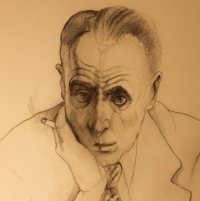
Lewis became the first American to win the Nobel Prize in Literature, citing him for his ability to create "new types of characters." Those types were ordinary middle- and working-class people from middle America, portrayed with a sometimes satirical disdain for cant in works such as Main Street (1920), Babbitt (1922), and Elmer Gantry (1927). [10]
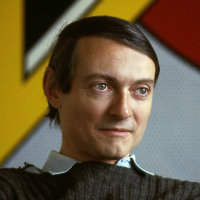
Lichtenstein's large-scale blow-ups of images from cartoon romances became one of the defining memes of American Pop Art. He described them as "industrial painting," thus erasing the distinction between fine and commercial art. Later, he began to apply his unmistakable style to reworking classic paintings, such as Van Gogh's Bedroom at Arles. [11]
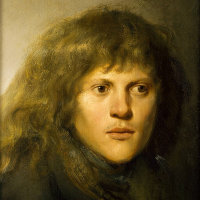
When both were young, he was often compared to Rembrandt in terms of promise, and indeed the two were friends and occasionally collaborated. But he did not show the same sustained development as his more famous colleague. [5]
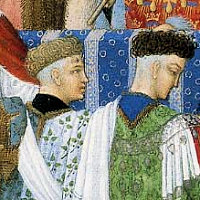
Little is known of their earlier lives, but all three worked for Philip the Bold of Burgundy, and his brother Jean, Duc de Berry, for whom they produced the Très riches heures. [I have no reason to suppose that these are self-portraits, but we have no other!] [2]
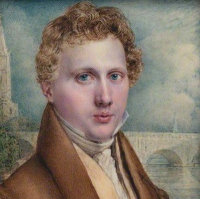
A pupil of Benjamin West, Linnell made a career as a portraitist and landscape painter, and later as an engraver. He continued the romantic style of landscape painting into the middle of the century. [8]
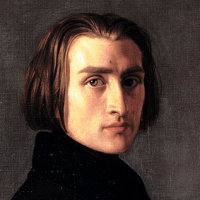
Liszt was the foremost piano virtuoso of his time, playing three or four concerts a week during his heyday during the 1840s, and much of his prolific output—including notably his set of 19 Hungarian Rhapsodies—is designed for display. But he was also a generous supporter of numerous other musicians, including Chopin, Schumann, Berlioz, Grieg, Borodin, and Wagner (who became his son-in-law). Many of his compositional techniques in his later works paved the way for advanced composers at the turn of the century, [9]
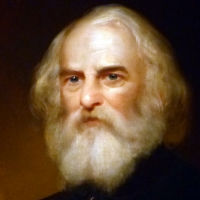
Longfellow was born in Maine, and taught at Bowdoin College and later at Harvard. His American themes and stirring diction made him the most popular poet of his day and earned him a reputation abroad. His Song of Hiawatha (1855) and similar poems employed the form of the Finnish Kalevala to create a similar Native American myth. [1, 8, 10]

Lönnrot was "a Finnish physician, philologist. and collector of traditional Finnish oral poetry. He is best known for creating the Finnish national epic, Kalevala, (1835, enlarged 1849), from short ballads and lyric poems gathered from the Finnish oral tradition" [Wikipedia]. [9]
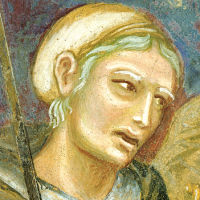
He and his brother Pietro were among the leading masters of the 14th century. Ambrogio is especially noted for his frescoes of Good and Bad Government in the Palazzo Publico in Siena, remarkable for their naturalistic landscapes as much as their vigorous figures. [The self-portrait is conjectural] [3]
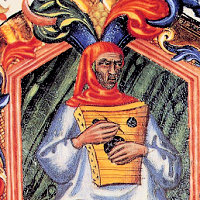
He is represented in the Squarcialupi Codex, one of the principal sources for Italian music in the 14th century, by 16 pieces, but little is known about his life. [3]
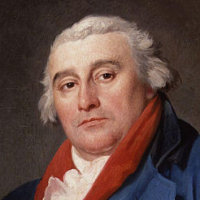
Born in Strasbourg, he settled in London in 1771, designing theatre sets for Garrick and Sheridan, publishing picuresque views of Britain, and painting large canvases mostly exalting the Sublime. [8]
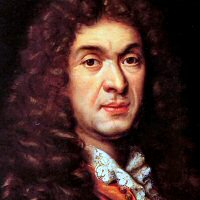
Lully became master of music to Louis XIV, writing music in all genres, but most especially operas and ballets. His operas include Alceste (1675), Atys (1676), Persée (1682), and Armide (1686). [4, 6]

Ordained a priest in 1507, and immediately began his work as a scholar, preacher, and writer. Wishing merely to start academic debate, in 1517 he posted his Ninety-Five Theses on the church door at Wittenberg. But this sparked the Protestant revolution, and in 1521 Luther was excommunicated. Contrary to the teachings of his time, he preached that the Bible, not the Church, was the ultimate spiritual authority, and indeed was one of the first to translate the entire Bible into German, so that it could be accessed by ordinary people. He also wrote a large number of hymns, both text and music. [2]
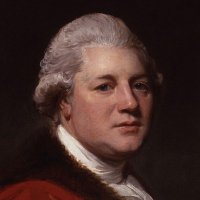
Macpherson leapt to fame with the publication of the epic Fingal in 1761, supposedly the work of the Gaelic poet Ossian, discovered and translated by him. Other works by Ossian followed. Although this was later exposed as a massive forgery, the mythical world of Ossian sparked something in the early Romantic fantasy, bringing worldwide fame to his supposed discoverer. [8]
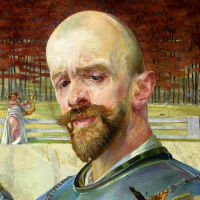
Malczewski was the leading painter of the late-19th-century Young Poland movement of artists seeking to reassert the Polish identity after a century of partition. "His creative output combined the predominant style of his times with historical motifs of Polish martyrdom, the romantic ideals of independence, Christian and Greek mythology, folk tales, as well as his love of the natural world" [Wikipedia]. His later works are much influenced by Symbolism. [9]
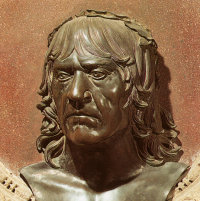
Mantegna's work is characterised by formidable skills in drawing and color, passionate interest in classical antiquity, formal invention, and frequent sparks of wit. He spent the last 45 years of his life as court painter to the ruling Gonzaga family in Mantua, and all of these qualities show up in his painted decoration of the Camera degli sposi in the ducal palace. [4]
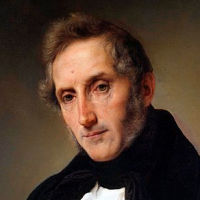
Manzoni's 1827 novel I promessi sposi (The Betrothed) is hailed as one of the masterpieces of world literature, serving as an important symbol of the Risorgimento or unification movement. Manzoni was also important in stabilizing the Italian language in a time of change. [1]
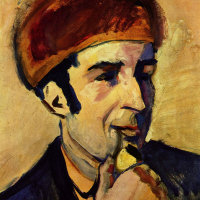
Visits to Paris introduced him to the work of Van Gogh, which nudged his style towards Expressionism, and led to his joining with Macke and Kandinsky in the Blaue Reiter group in 1911. His somewhat mystical disposition led him towards an abstract style depicting the inner lives of animals. He died fighting in WW1. [11]

Martini was a friend of Petrarch and a leading exponent of the International Gothic style. "Perpetuating the Sienese tradition, Simone's style contrasted with the sobriety and monumentality of Florentine art, and is noted for its soft, stylized, decorative features, sinuosity of line, and courtly elegance." [Wikipedia] The self-portrait is conjectural. [3]
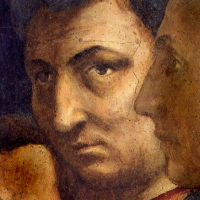
Though he died at the age of 26, he brought about a revolution in painting and is one of the founding fathers of the Italian Renaissance. His finest work is probably the fresco cycle on the life of St. Peter in the Brancacci Chapel at Santa Maria Novella in Florence (1425–28), working alongside the painter Masolino; the names mean "big Tom" and "little Tom" respectively. [3]
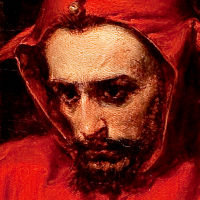
Working mainly in Krakow, Matejo painted mainly subjects from Polish history. Although there is little new about his rich painterly style, which looks back to baroque traditions, he was utterly contemporary in his choice of themes from the past to address current issues in a partitioned Poland that had ceased to exist as an independent nation. The image is a presumed self-portrait from his painting Stanczyk. [9]
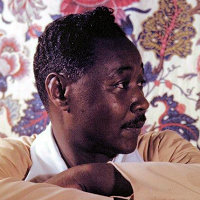
McKay originally came to the US to study agriculutre at Tuskegee, but he was more interested in writing. His poem "If We Must Die" electrified African Americans experiencing the racial persecution of 1919. McKay later became a Communist, and lived in Russia from 1922 to 1934. [12]
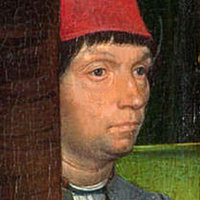
Based in Bruges, and probably a pupil of Rogier van der Weyden, he developed a sweeter more balanced version of his style which brought him great success. Also spelled "Memlinc." [2]
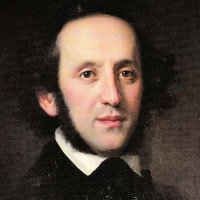
A major figure in the Romantic movement and a precocious talent, he wrote many of his best-known works (such as the Midsummer Night's Dream overture) while still in his teens. [8]
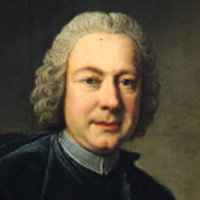
Born and educated in Italy, Metastasio was appointed Court Poet in Vienna in 1730. His opera libretti, which were set by many diferent composers, virtually defined the genre of opera seria: ennobling subjects drawn from history, a small cast of characters, conflicts between duty an affection expressed through a series of solo arias. [7]
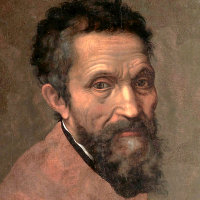
A towering universal genius, his work virtually defines the Italian High Renaissance. He made his name primarily as a sculptor in his native Florence, though he worked elsewhere as well. His most famous works, however, are in Rome: the ceiling of the Sistine Chapel (1508–12) and his work from 1546 as leading architect of the Basilica of St. Peters, one of a succession of masters who brought the building to its present form. [4]
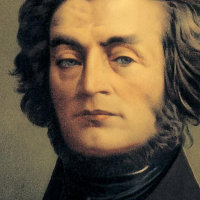
Mickiewicz was born in Polish Lithuania under Russian occupation. His support of Polish independence as a young man led to a five-year exile in Russia itself, after which he moved to Paris. It was there that he wrote his book-length poem Pan Tadeusz (1834), now regarded as the Polish national epic. He continued to support Polish causes from outside the country until he died in Istanbul, raising Polish forces to fight the Russians in the Crimean War. [9]
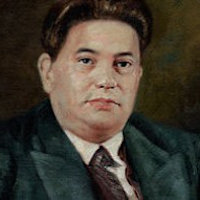
A member of Les Six (with Satie, Poulenc, and others), Milhaud was a prolific composer in all media, noted for his early use of jazz and his experiments in polytonality and unusual instrumental combinations. [1]
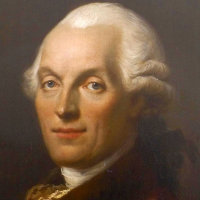
Mique was a relatively conventional architect in the neo-classical style, but he is best remembered for the rustic hameau he created for Marie Antoinette in the grounds of Versailles. Unfortunately his devotion to the Queen led to his execution in the last days of the Reign of Terror. [6]

Molière might be set beside Racine as the comic and tragic masks respectively of French classical theatre. A working actor himself (he died acting in one of his own plays), he had a practical sense of what worked with an audience, including devices taken from popular comedy. But his willingness (like Shakespeare's) to occasionally write farce should not detract from his control of the French language, which was as great as Racine's. [6]
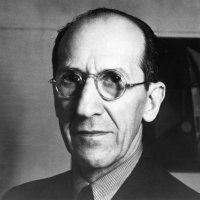
After painting in a fairly naturalistic, he went through a rapid development between about 1910 and 1915, moving towards total abstraction, the elimination of curved lines and mixed colors, joining with Theo van Doesburg in 1917 to create the movement De Stijl. He spent his last four years in New York City, where his manner became less monumental and more syncopated, no doubt influenced by the jazz he loved. He was intensely interested in the Theosophical Movement. [11]

The towering genius of the first half of the 17th century, and a founding father of opera. Unfortunately, only three of his dozen operas survive: La favola di Orfeo (The Story of Orpheus), written for Mantua in 1607 and the earliest opera to remain in the general repertoire, and The Return of Ulysses and The Coronation of Poppea, both written for Venice at the end of his life. [4]
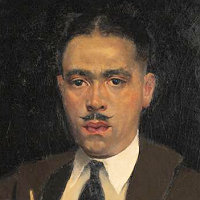
Motley was born in New Orleans, but studied in Chicago and lived there most of his life, reflecting the Harlem ideal of the :New Negro," but never actually living there. Of mixed race himself, he did not mingle easily with the Black community, and regarded painting partly as a way to better understand his own people. [12]

A child prodigy as both performer and composer, Mozart produced an extraordinary body of work in all genres over a relatively short life. He wrote the greatest of his many operas after moving to Vienna: three collaborations with Lorenzo da Ponte—The Marriage of Figaro (1786), Don Giovanni (1787), and Così fan tutte (1790)—framed by two German Singspiels: The Abduction from the Seraglio (1782) and The Magic Flute (1791). [7]

He is best known for his two lyric cycles, Die Schöne Müllerin and Winterreise set to music by Franz Schubert. [8]

The leading artist in his native Seville, most of his works are of religious subjects, sometimes treated with strong dramatic sense, but more often appealing to popular piety—a quality shared by his genre paintings of beggar children that have a similar sentimental appeal. [1]
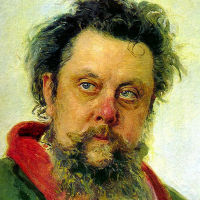
Like many of his fellow nationalist composers among the "Famous Five," Mussorgsky had another profession, in his case as an army officer. His musical style as shown in his operas such as Boris Godunov (1869–74) and Khovanshchina (1873, unfinished) apeeared to his contemporaries as crude, and for many years his works were performed in edited editions, but recent productions have revealed the vigor of his highly original style. [9]
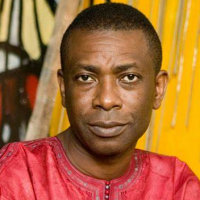
N'Dour's numerous CDs and videos rocketed him to the top of the World Music scene in the 1990s, performing all over the world in a mixture of Wolof, English, French, and other languages. In addition, he has played an active role as a political and social activist, serving both as a UN cultural ambassador and as a minister for his own country, Senegal. [12]
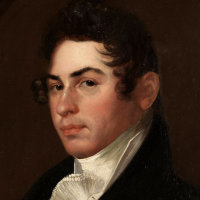
A pupil of Thomas Sully, Neagle became the most fashionable portrait painter in Philadelphia. The realism of his Pat Lyon at the Forge is therefore not typical of him, but was done at the request of the sitter. [10]
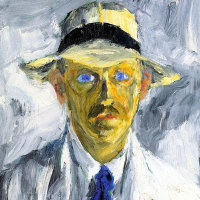
Born Hans Emil Hansen, the artist would later take the name of his birthplace, Nolde in Denmark. He studied art mainly privately and in visits to Paris, and later exhibited with both Expressionist groups Die Brücke and Der Blaue Reiter. His art was condemned as "degenerate" by the Nazis, but he nonetheless survived the period by making whatever compromises might have been necessary. [11]
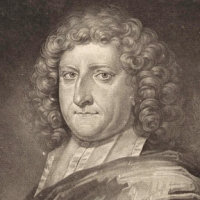
[I can find out next to nothing about his career.] [5]
GO TO: [A–C] [D–F] [G–K] [L–N] [O–R] [S–U] [V–Z]

Writing both sacred and secular vocal music, he was one of the leading musicians of the late 15th century. [2]
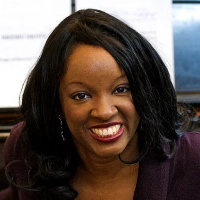
Born in New York, Okoye has an African American mother and a Nigerian father, and he childhood was divided between both countries. No stranger to the large stage, she has writen an opera on the life of Harriet Tubman, and several projects commissioned by US symphony orchestras. [12]
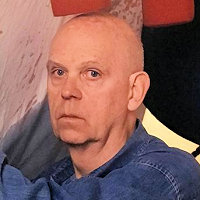
Oldenburg moved with his family to Chicago in 1936, when his father was appointed Swedish Consul. He studied at Yale and later the Art Institute of Chicago before moving to New York in 1956. Participating in "happenings" and creating soft, painted plaster, or greatly enlarged versions of everyday objects, he became a leading artist of the Pop movement. Unlike many of his contemporaries, he continued a high-profile career right up to his death, making huge public sculptures in collaboration with his wife, Coosje van Bruggen. [11]
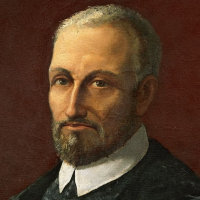
Born near Rome, he was active in Roman churches almost all his life, first as chorister and then as choirmaster. His large output was mainly of sacred music (for example, 105 masses) though he also wrote secular madrigals. His multi-voice contrapuntal style is considered the culmination of renaissance polyphony. [3]
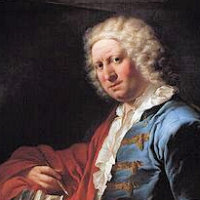
As a painter, the Piacenza-born Panini specialized in vedute, views of Rome and similar sites, often involving free rearrangement of the buildings to support a theme. He was also an interior decorator of palaces and occasional architect. [3]

The son of Italian immigrants, Paolozzi studied in Edinburgh, at the Slade School in London, and later in Paris. He was knighted by Queen Elizabeth mainly in recognition of his many public works, but he is equally important in the history of art as the creator of the first collages of scraps from American magazines, taken as the start of the Pop Art movement. [11]
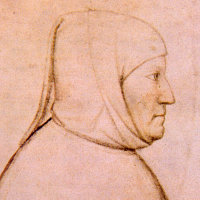
A lyric poet and scholar, Petrarch's revival of interest in Roman literature is acknowledged as a foundation stone of the Renaissance. [3]
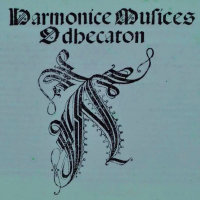
Petrucci's Harmonice Musices Odhecaton, (100 songs of harmonic music), a collection of chansons printed in 1501, is considered the first polyphonic music printed with movable type. Most of the pieces it contains are by Franco-Flemish composers. [3]
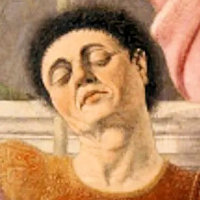
Born in Borgo San Sepolcro in Umbria, he also worked in Arezzo, Urbino, and elsewhere. Though virtually forgotten after his death, he has been reappraised in the 20th century as filling the gap between the early and High Renaissance. Intensely interested in perspective, his work has a mathematical rigor that adds tautness to his often unconventional compositions, and his gift for color is matched by few others of his time. The self-portrait is conjectural. [3]
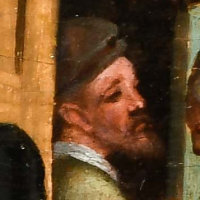
Little is known about this painter of the earlier Golden Age, other than some portraits and allegories. [This detail from one of Pieterz's paintings is only a possible self-portrait.] [5]
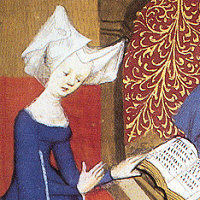
Born in Venice, Christine moved to Paris as a child, when her father became astrologer to the king. She married a court official, then had to support herself by her writing after he died. She wrote poetry and prose in most genres, and is credited as being the first female professional writer of modern times. [2]
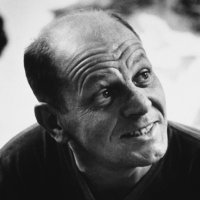
For many people, Jackson Pollock's "drip paintings," created by pouring paint directly onto raw canvas attached to the studio floor, are the defining image of Abstract Expressionism, and certainly the source of the alternative description, "Action Painting." But Pollock, who was born in Wyoming, studied with Thomas Hart Benson, and worked in the WPA project of the 1930s, reached this style only through a long process of moving through a kind of semi-abstract surrealism. [11]
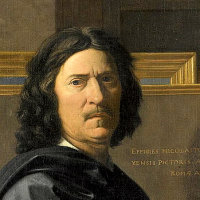
One of the preeminent French painters of his century, and its outstanding classicist, his work includes historical, religious, and mythological subjects, some focusing on the figures in the manner of Raphael, other set in classical landscapes similar to those of Claude Lorrain. [6]
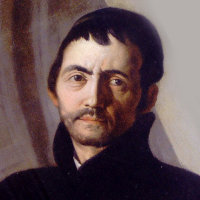
A Jesuit lay brother, he is most famous for his masterpiece, the ceiling fresco in Sant'Ignazio in Rome, perhaps the most stupendous feat of illusionistic painting ever accomplished. He also worked in several other cities, including Vienna, and published a treatise on architectural painting which was widely influential. [4, 7]
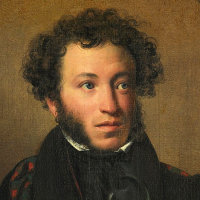
While in exile because of verses critical of the Tsar he wrote his most celebrated play Boris Godunov. His masterpiece is the novel in verse Eugene Onegin, serialized between 1825 and 1832. While his range is extraordinary and an inspiration to later Russian composers, he is celebrated as much for restoring the Russian language (as opposed to French) as the vehicle for artistic expression. [9]
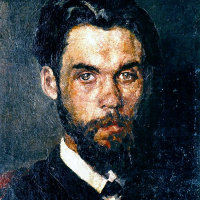
A realist painter, he specialized in celebrations of ordinary Ukrainian life and customs. He became the teacher of Kasimir Malevich. [9]
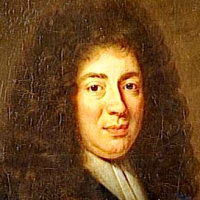
Although also active in the spoken theatre, Quinault is principally noted as the librettist for all Rameau's operas, based on classical subjects. [6]
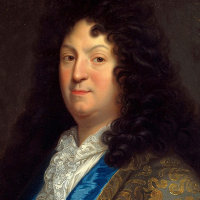
Racine's tragedies such as Bérénice (1670) and Phèdre (1677) display his control of the classical unities of time, subject, and setting, and the flexibility and balance of his handling of the 12-syllable French Alexandrine. With Corneille and Molière, he comprises the Trinity of classic French drama. [6]
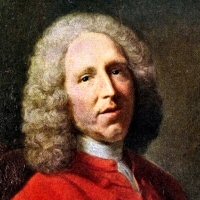
Rameau first won fame as a music theorist and composer of harpsichord music. It was not until his 50th year that he wrote the first of the elaborate operas (tragédies en musique) on which his fame now rests. These include Hippolyte et Aricie (1733), Les Indes galantes (The Amorous Indes, 1735), Dardanus (1737), and the posthumous Les Boréades (Sons of the North Wind, 1763). [6]
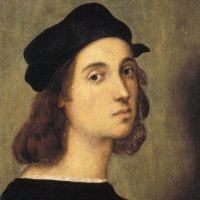
One of the towering geniuses of the Italian Renaissance, Raphael was born in central Italy, and worked there until 1508, when he moved to Rome to decorate several stanze in the Vatican for Pope Julius II, and later his successor Leo X. The influence of these and other works of the period can be seen in religious art for many centuries to come. He was also one of the many architects of St. Peters. [3]

The greatest artist of the Dutch Golden Age, he nonetheless retained his own style which set him apart from his contemporaries. There is a strong baroque influence earlier in his career, but his later work developed a quality of deep introspection in which the subject seems to glow within rich layers of paint. [5]
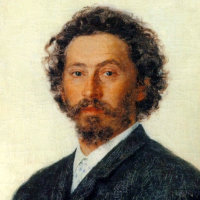
The leading Russian painter of his day, and the first to achieve international renown with specifically Russian themes, Repin painted numerous portraits and scenes from Russian myth and history. Although he left Russia before the Revolution, never to return, he was still extolled as a model for Socialist Realism, a label that dishonors the verve and spontaneity of his painting at its best. [9]
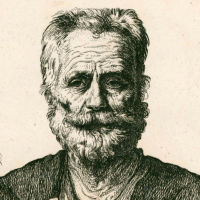
As a young man, Ribera left his native Spain to study art in Rome, where he became one of the followers of Caravaggio. His dramatic compositions and bold contrasts of light and dark, whether applied to sacred or secular subjects, attracted buyers who took his works back to Spain almost as soon as he had painted them. [1]

Though a naval officer in professional life, Rimsky was the most brilliant orchestrator of the "Famous Five," and responsible for completing Borodin's Prince Igor and preserving Mussorgky's Boris Godunov for many decades in more conventional clothing. His own operas such as The Invisible City of Kitezh (1904) and The Golden Cockerel (1907), are staples of the Russian repertoire, but less frequently produced elsewhere. [9]
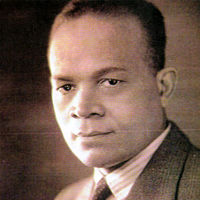
Very light skinned, Rogers experienced little racial prejudice until he settled in the US at age 26. His most influential work was The World's Greatest Men of African Descent (1931), which identified many notable people previously considered white as descendants of African forebears. [12]
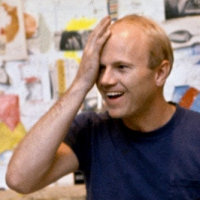
"Drawing from his background working in sign painting, Rosenquist's pieces often explored the role of advertising and consumer culture in art and society, utilizing techniques he learned making commercial art to depict popular cultural icons and mundane everyday objects." [Wikipedia] His gigantic F-111 (1964–65) occupies an entire room in the Museum of Modern Art in New York. [11]
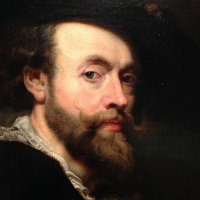
One of the giants of baroque art, Rubens developed the style of Titian into a powerful rhetoric applied equally to sacred and profane subjects, and exerted enormous influence in Spain, England, and France as well as in his native Flanders, continued in the work of his many pupils. His position at so many courts also made him invaluable as a diplomat. [1, 4, 5]
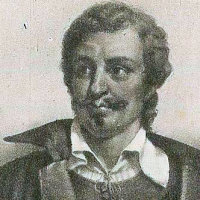
The son of a painter, he became the leading landscapist of his age, famous for the underlying drama of his apparently naturalistic paintings and the brilliant handling of his skies. [No contemporary portraits of Ruisdael exist; the illustration here is a 19th-century fantasy.] [5]
GO TO: [A–C] [D–F] [G–K] [L–N] [O–R] [S–U] [V–Z]
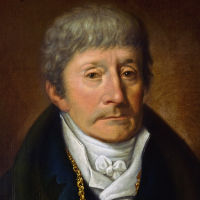
Though famous in legend as Mozart's nemesis in Vienna, Salieri was the more successful composer in his day, writing over twice as many operas, including Europa riconosciuta, about the later life of Ovid's heroine, which inaugurated the La Scala opera house in 1778. He also wrote operas in French for Paris, and a couple of comic operas for performance back home. [7]
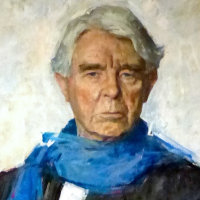
Sandburg won two Pulitzer Prizes for his poetry and one for his biography of Abraham Lincoln. He began his writing career as a journalist on the Chicago Daily News, and many of his poems paint a realistic, but basically optimistic, portrait of city life. [10]
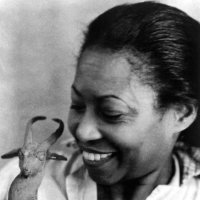
A leading sculptor of the Harlem Renaissance, Savage was one of only two African Americans commissioned to create works for the 1939 New York World's Fair. The result, Lift Every Voice and Sing, showing a group of Black singers standing like the strings of a harp, was widely reproduced. [12]

Though born and working mainly in Germany, Shickhardt studied at the University of Leiden and, at one time or another, worked for the Prince of Orange. He is known for his many sonatoas for woodwind instruments, which he himself played professionally. [5]
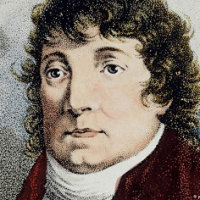
Born in Bavaria, Schikaneder moved to Salzburg as a young man, where he befriended the Mozart family, and thence to Vienna, where he was first a member of the Emperor's company, then set out on his own as manager of the Theater auf der Weiden. It was in that capacity that he commissioned, wrote the words for, and starred in Mozart's Magic Flute (1791). [7]
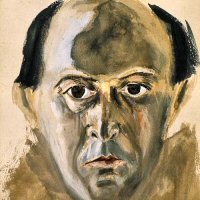
Schoenberg is most famous in the history of music as the developer first of atonal music and then of the principle of musical organization known as Serialism. Although he wrote three shorter operas, his masterpiece is Moses und Aron. Although he conceived it in three acts, Schoenberg had only finished two when he emigrated to America in 1934, and it is this version that is usually performed. [Schoenberg was also a painter; this is a self-portrait.] [11]
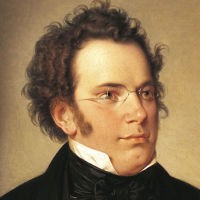
Although he died before his 32nd birthday, Schubert was extremely prolific as a composer, writing symphonies, masses, chamber music, piano sonatas, and over 600 songs, both individually and in cycles. Though little known in his lifetime, his work was rediscovered and championed by Mendelssohn, Liszt, and Brahms, making him in effect the source of the German Romantic movement. [8]
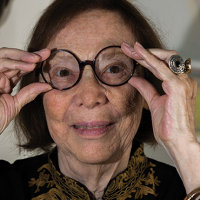
For 34 years, Schulman was poetry editor of The Nation. She is also a winner of the 2016 Frost Medal for Distinguished Lifetime Achievement in American Poetry, awarded by the Poetry Society of America, and a member of the American Academy of Arts and Letters. [11]

A friend of Schubert as a young man, Schwind illustrated several of his songs. He went on to become one of the chief narrative painters of his time, principally painting subjects derived from German literature and myth. [8]
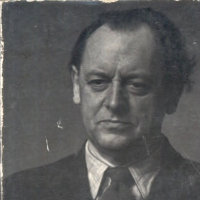
Although best known for his participation in the Dada movement and invention of "MERZ" (the middle syllable of "Kommerzbank") or collages created out of trash, Schwitters was also a sculptor, poet, dancer, and composer. He fled Germany in 1937 and found refuge in England. [11]
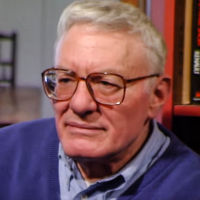
Sir Peter Shaffer's plays have been associated with the English National Theatre since its founding; they include The Royal Hunt of the Sun (1964), Black Comedy (1965), Equus (1973), and Amadeus (1979). He was the twin bother of mystery playwright Antony Shaffer, author of Sleuth (1970). [7]
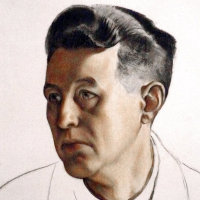
A leading artist of the Cubo-Realist school in the interwar period, Sheeler photographed factories, grain silos, and similar artifacts, and rendered them in canvases that share clear colors and a clean geometry. [10]
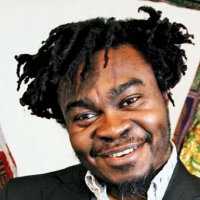
Born in London to Nigerian parents, Shonibare went back to Africa with them as a child, before returning to England in his late teens. He is famous for his use of highly colored African fabrics for his sculptures and assemblages, that frequent explore themes of colonialism and subjugation. Paralyzed on one side of his body through illness, he uses assistants to complete the work that he designs. [12]
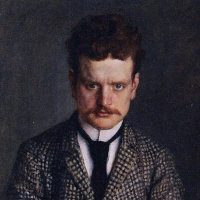
Sibelius "is widely regarded as his country's greatest composer, and his music is often credited with having helped Finland develop a national identity during its struggle for independence from Russia" [Wikipedia]. In addition to his seven symphonies, at least two of which have become repertoire standards, he wrote a number of tone poems based on Finnish history and myth, such as Finlandia, Tapiola, the >Lemminkainen Legends, and the Karelia Suite. [9]
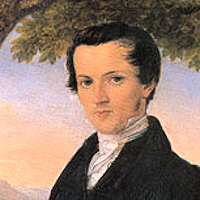
Under the influence of Weber, Silcher abandoned his studies of theology to devote himself to music. An important collector and arranger of German folk song, he also contributed many of his own, most notably Die Loreley, which has become a popular standard. [8]

Born in Indianapolis, Sissle served in WW1 as a member of the US Army Band credited with introducing syncopated music in to Europe. Around the same time, he met Eubie Blake. The two went into partnership after the war, creating songs such as "I'm just wind about Harry" and the first all-Black musical, Shuffle Along (1921). [12]
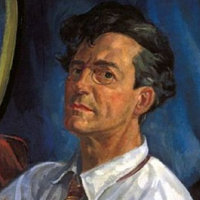
Sloan was one of a number of realist painters in New York in the early 20th century popularly known as "The Ashcan School" because of their fondness for less elevated subjects. Sloan himself was a committed Socialist. [10]
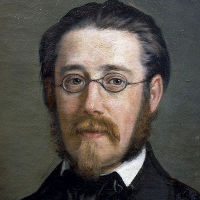
Known as the "father of Czech music," his works Ma vlast (My Homeland) and The Bartered Bride most clearly exemplify the tide of Romantic Nationalism, but only a small portion of his works have entered the international repertoire. [1]

Although he also painted portraits and historical or religious works, he is best known for his genre subjects, typically a merry but disorderly household scene illustrating the consequences of ignoring some moral precept. [5]
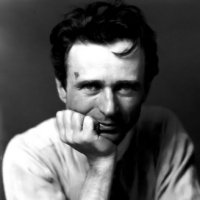
Born in Luxembourg, but brought to the USA as an infant, Steichen became one of the leading photographers of his time, credited with converting the medium as an art form; he later became director of photography at MoMA. [10]
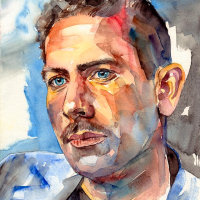
Winner of both the Pulitzer and Nobel Prizes, Steinbeck's novels span the gamut from the comic Tortilla Flat (1935) to the epic East of Eden (1952), and include the iconic tragedy of the dispossessed, The Grapes of Wrath (1939). [10]

Born in the south of Italy, Stella came to New York to study medicine, but soon abandoned it for painting. However, it was not until he had returned to Europe in 1909 and encountered the Futurists and Cubists, that he formed his characteristically vigorous style, returning to America in 1913 and applying it to a variety of subects from city life. [1]
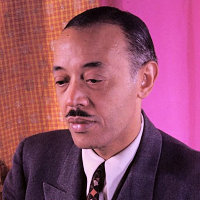
Although associated with Langston Hughes and other luminaries of the Harlem Renaissance, Still used forms and forces associated with classical music. His Afro-American Symphony (1931) was the first large-scale work by a Black composer performed by a major orchestra (Rochester), and his opera Troubled Island was the first by any American to be performed by the New York City Opera. [12]
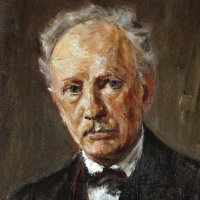
You might say that Strauss had two careers: as an orchestral composer, and as an opera one. His tone poems in the 1890s such as Don Juan and Till Eulenspiegel brought him immediate fame, but he wrote his last big orchestral work in 1915. Meanwhile his operas Salome (1905) and Elektra (1909) continued his radical Expressionism, but with Der Rosenkavalier (1911), he began a stylistic retreat that continued until his last opera, Capriccio, in 1942. [11]
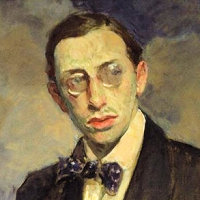
Starting as an enfant terrible in Paris with the ballets he wrote for Serge Diaghilev, he gradually pared back his resources, developing a neo-classical style between about 1930 and 1955, but eventually turning his back on tonality. [11]
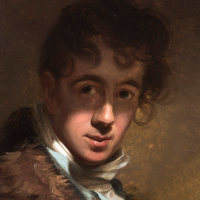
Sully was born in England and returned there several times (on one occasion to paint Queen Victoria), but his main career was as the leading portrait painter in Philadelphia in the early 1900s. [10]
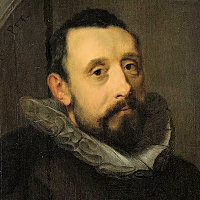
As organist of the Old Church in Amsterdam and a sought-after teacher, he had immense influence on later generations of Northern European organist-composers. He was the first to give an independent part to the organ pedals, and to write fully worked-out fugues. [4]
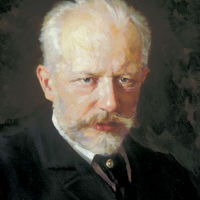
Tchaikovsky was the first Russian composer to gain an international reputation, in part because his Russian voice was allied to a thorough training in Western parctice. His symphonies, tone-poems, and ballets have become staples of their repertoire, but his dozen operas are less well-known, except for Eugene Onegin (1879) and The Queen of Spades (1890), both based on texts by Pushkin. [9]

Gerard Terborch (also spelled ter Borch) received his training from his artist father. He developed a specialty of intimate genre scenes, often showing women in their homes, and establishing many of the themes (such as the writing or receipt of a letter) later developed by Vermeer. [5]
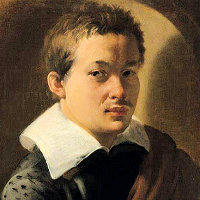
He was a leading member (with Honthorst and Baburen) of the Utrecht School of painters in early 17th-century Holland, following in the style of Caravaggio. Among them, Terbrugghen is noted for his gentler tonal gradations and subtlety of color. Also spelled "Ter Brugghen." [4]
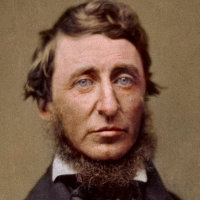
With Emerson, Thoreau (accent on the first syllable) was a leading figure in the Transcendentalist movement. He is best known for his two-year stay in a cabin he built himself in Emerson's woods at Walden Pond, but he was active politically also, as an abolitionist, pacifist, early environmentalist, and coiner of the term "civil disobedence." [10]
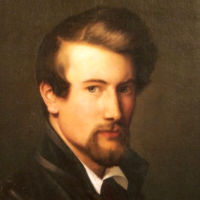
A painter of the Norwegian Romantic school, Tidemand is best noted for the figures he included in landscaped by his friend Hans Gude, though he also painted numerous genre subjects of his own. [1]
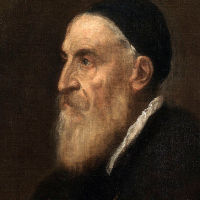
Arguably the greatest Venetian painter of the High Renaissance, he produced works in just about every genre over an exceptionally long career. Probably his greatest influence was in his handling of paint and use of color, which became a starting point for Rubens and others in the next century. [1, 3, 4]
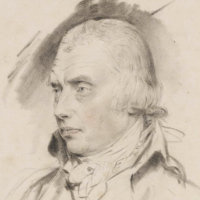
Towne never achieved fame in his day, but his watercolor landscapes, ranging from Rome to the English Lake District, show him to have been an exquisite artist and a significant forerunner of Romanticism. [8]
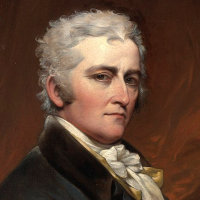
Trumbull fought in the American War of Independence, and founded his career on depictions of battles and other key historical events. He spent several years in London working with Benjamin West, and was even imprisoned there for several months for his part in the Revolution. [10]
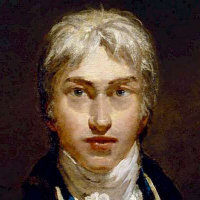
Rivaled only by Constable, Turner was the dominant British landscape painter of the first half of the 19th century, he started his career with topographical views intended for engraving, and ended with works whose subjects were dissolved in veils of paint and light. [8]
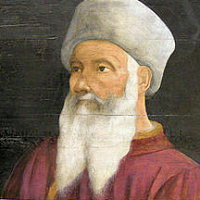
With his interest in mathematics as well as art, Uccello was obsessed with perspective. He seldom used this to create an illusion of reality, however, but rather as an additional element in fanciful but dramatic paintings whose aesthetic is basically Gothic. [3]
GO TO: [A–C] [D–F] [G–K] [L–N] [O–R] [S–U] [V–Z]
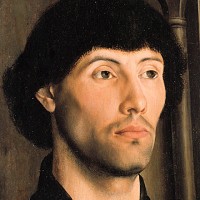
The major figure of the second half of the 15th century in the Netherlands, he is known for his psychological observation and the richness of his backgrounds, as in the Portinari Altarpiece which introduced his style to Florence. [Identificaton of this as a self-portrait is conjectural.] [2]
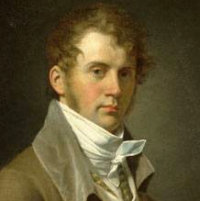
After painting a portrait of Aaron Burr, the statesman virtually adopted him, sending him for five years to Paris to study, and giving him an apartment in his own home. Vanderlyn's career is chiefly noted for his portraits of other political figures, though he did some narrative paintings as well. [10]
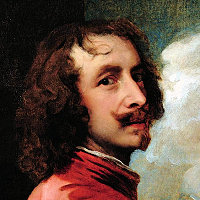
For a time the principal assistant to Peter Paul Rubens, Van Dyck had a shorter but similarly stellar and varied career, painting in most of the major baroque genres. He was especially known as a portraitist, particularly in England, where he served the courts of both James I and Charles I. [4]

The most celebrated and influential northern painter in the earlier15th century, responsible for developing a style of oil painting capable of magnificent detail and effects of light. His major work, the altarpiece in Ghent Cathedral, is recorded to have been begun by his perhaps even greater brother Hubert. [2]

After training in Turin and Paris, he established himself as a conductor in Berlin. Coming to the US in 1915, he made his mark as an advocate of new music, and as a composer constantly seeking new sounds, including ultimately tape and electronics. [10]
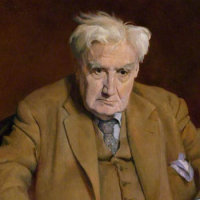
Associated with the English folk song revival, he was more than anybody responsible for giving English music its national voice. He wrote nine symphonies and numerous vocal works, including the one-act opera Riders to the Sea. His first name is pronounced "Rafe." [8]

Velázquez was the great master of the Spanish baroque, and with Rubens and Rembrandt, one of the giants of his century. He had been appointed court painter in 1624, at the age of only 25, with the exclusive right to paint the royal family. His historical, mythological, and genre scenes show an increasingly intricate imagination, especially as concerns the relationship of the painter to his work. [1, 4]
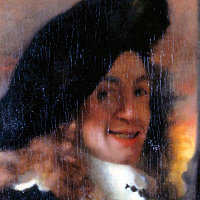
Now considered second only to Rembrandt among the geniuses of the Golden Age, Vermeer did not have much success in his lifetime. Although most of his relatively small body of work could be described as genre subjects (for example, women engaged in household tasks), their sense of greater significance—a simple act suspended in eternity—is not easily explained, though much has to do with the solidity of his forms, his sense of light, and a paint surface that one contemporary described as "crushed pearls melted together." [5]
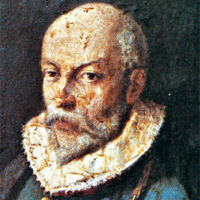
One of the leading composers of his time, Victoria studied in Rome (possibly with Palestrina) on a grant from King Philip II. He was also ordained as a priest. He returned in 1587 as chaplain to the King's sister, but also working as an organist and composer. He returned to Rome for two years in 1593, but died in Spain. [1]
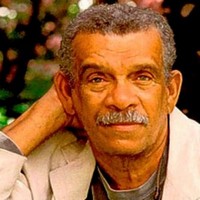
Winner of the 1992 Nobel prize in literature, Walcott was a world traveler who kept returning to his birthplace of Saint Lucia, infusing his work with Caribbean history, light, and color. His 1990 epic Omeros attempts nothing less than an overview of the African diaspora in the manner of Homer. [12]

Warhol (born Andrew Warhola Jr.) worked in many media beside painting, including silk-screen printing, sculpture, and film. Many of his images, such as those of Campbell soup cans, were not only taken from industrial sources, but reproduced multiple times by industrial methods. His studio, which he called The Factory, became the nerve center of American Pop Art. [11]

Influenced by Rubens, but developing his own refined elegance, he was the leading Rococo painter of the age, virtually inventing the genre of the fête galante. [6]
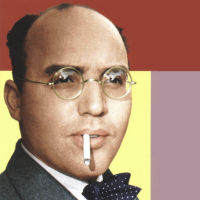
Weill became famous in Berlin for his collaborations with Bertolt Brecht, among them The Threepenny Opera (1928, a satirical adaptation of John Gay's The Beggar's Opera, see above) and the political opera The Rise and Fall of the City of Mahagonny (1930). Fleeing Nazi Germany, he eventually settled in New York in 1935, finding new fame on Broadway, but also writing more operatic fare such as Street Scene (1946, with Langston Hughes). [11]
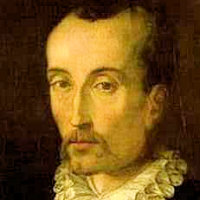
Born in Flanders, Wert went to Italy as a choirboy and remained there the rest of his life, working mainly for the Gonzaga court in Mantua and the Este court in Ferrara. He played an important part in the development of the madrigal in Italy in the generation befoe Monteverdi. [3]
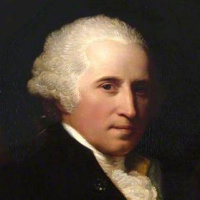
Although he set up as a portraitist, it was as the painter of historical and mythological subjects that he made his name. A founding member of the Royal Academy in 1768, he became its president in 1792. His London studio became a Mecca for American artists studying abroad. [10]
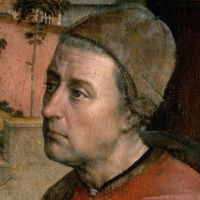
Very little is known of Rogier's life, except that he was highly successful in his time, with his works exported to Italy and Spain, and commissioned by princes both in the Netherlands and abroad. His extraordinary detail and emotionally intense compositions now place him firmly with Jan van Eyck and Robert Campin in the trinity of early Netherlandish masters. [1, 2]
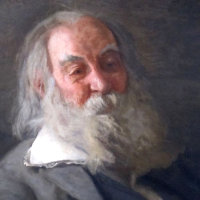
Writing in a free verse style that would influence successors in the next century, Whitman combined a Transcendantalist philosophy with an acute observation; his later works were criticized for their overt sexuality. He worked as an army clerk and volunteer nurse in the Civil War. [10]

A former actor and pioneering director of the German Expressionist silent film, notably with The Cabinet of Dr. Caligari in 1920, Wiene fled Germany in 1933, never to return. He never matched the success of his earlier work. [11]
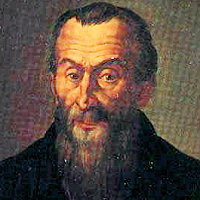
Willaert's music traveled to Italy before he hiself did, at the age of 25. But that was where he spent the rest of his career, in court appointments in Ferrara and Milan, and latterly as maestro di cappella of St. Mark's at Venice, becoming the founder of an important musical tradition that was to last through the 17th century. He also composed many secular compositions to Italian texts. [2, 3]
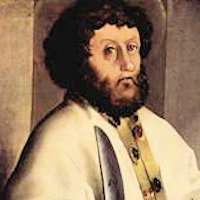
Witz was born in Germany, but was active most of his life in Switzerland. "His 1444 panel The Miraculous Draft of Fishes (a portion of a lost altarpiece) has been credited as the earliest extant faithful portrayal of a landscape in European art history, being based on observation of real topographical features" [Wikipedia]. The thumbnail shows a detail from one of his religious paintings; it is not necessarily a self-portrait. [2]
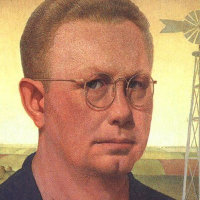
Working mainly in his native Iowa, Wood became one of the leading Regionalist painters of the interwar years. He is noted for his objective stance, clear colors, and precise attention to detail, qualities he brought even to his depictions of people, as in his iconic American Gothic of 1930. [10]

With the joint publication of the Lyrical Ballads with Coleridge in 1798, Wordsworth co-founded the English Romantic movement, and continued to dominate it for decades with poetry of his native Lake District and his doctrine of capturing experience direct from Nature for later use as "emotion recollected in tranquility." [8]
